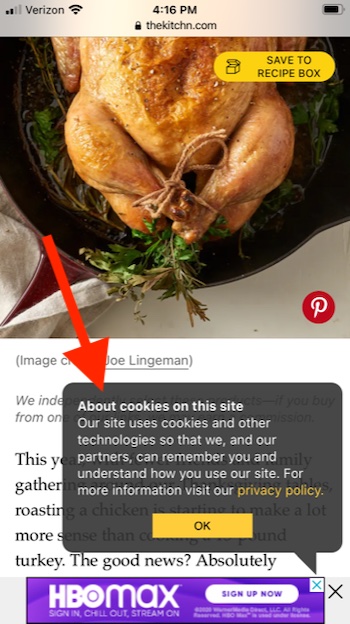Attributing sales to email marketing can be difficult. A typical customer journey involves multiple touchpoints, such as email, organic search, and social media. But the better we understand the impact of each channel on conversions, the better we can optimize that channel for growth.
In this post, I’ll address common mistakes in tracking sales from email.
4 Common Email Attribution Errors
Mistake 1: Relying on offer codes. Many retailers include offer codes in marketing emails. Customers then enter that code at checkout to receive a discount. After the campaign, merchants tally the transactions from the code to gauge performance.
But there are several reasons why this method of attribution is inaccurate.
- Few recipients use offer codes. In my experience, offer code redemptions represent no more than 20 percent of conversions. Consumers forget, or their products do not qualify for the offer.
- Competing offers. Consumers inclined to use discount codes often search for a more attractive offer, such as an affiliate site.
- User error. Long or complicated codes produce typos and confusion. Shoppers give up after a few attempts.
- Easily shared. If it is not unique to a subscriber for single-use, the offer code is often shared or posted on other sites. This artificially increases revenue associated with email.
A better use of offer codes is in understanding the demand for a product and its price elasticity. To improve their accuracy, consider:
- Keep codes short and easy to remember.
- Use the codes only for a specific email.
- Create unique codes for each subscriber to prevent sharing.
- Program the links in the email so that clicks will auto-load a code into your shopping cart. This will ensure the code is correct.
Mistake 2: Using only Google Analytics for sales attribution. Google Analytics has multiple faults for tracking traffic and revenue from email.
First, Google Analytics classifies traffic from email as “Referral” unless every email link includes a UTM parameter. Creating those parameters is easy in Google’s Campaign URL Builder. Here’s an example (in italics) for “source,” “medium,” and “campaign” parameters:
https://www.practicalecommerce.com /?utm_source=december&utm_medium=email&utm_campaign=emailtracking
But even with UTM parameters, Google Analytics could still under-attribute traffic and revenue from email. This is because email marketing platforms often redirect email links to facilitate the platforms’ own analytics. When a recipient clicks on a link, the platform redirects to an internal URL and then back to the original. Occasionally the process breaks, especially on mobile devices, creating errors in the parameters and preventing accurate tracking.
Furthermore, Google Analytics uses cookies and JavaScript. Worldwide privacy laws, such as the E.U.’s General Data Protection Regulation, increasingly require websites to notify and obtain consent on cookie-use from visitors, who do not always agree. The result is a loss of accurate tracking.
The fix is a closed-loop matching process to determine which sales are associated with the email campaign.

Worldwide privacy laws require websites to notify and obtain consent for cookie-use from visitors, such as this example from TheKitchn.com.
Mistake 3: Relying solely on opens or clicks. Merchants often determine the performance of an email campaign by comparing sales against opens or clicks. This, too, produces inaccuracies.
Email platforms track opens via a 1×1 image pixel. But not all recipients download images, especially on mobile. This prevents the pixel from firing, resulting in the under-reporting of opens and clicks.
Moreover, an email drives conversions even if recipients do not open it. A subject line and preheader in an email inbox are similar to a display ad, which can influence recipients elsewhere, beyond the email.
To correct, track overall sales from subscribers, not just sales resulting from opens or clicks.
Mistake 4: Matching sales to email addresses. Another popular attribution method is to compare the email address of a sale against the address of subscribers. This can create inaccuracies.
First, most consumers have more than one email address and will often switch from one to another. An individual could subscribe to a list with a work address and then purchase goods using a personal one. Or another household member could complete the purchase, not the subscriber. This is common with complex or larger items, such as a vacation package.
To correct, attribute sales at the household level by comparing physical addresses.



